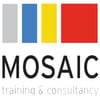Online VS Classroom Learning: What The Experts Say

According to LinkedIn's 2018 Workplace Learning Report, executives responsible for developing talent depend more on online learning solutions than ever before, especially as the #1 reason for learners not advancing their skills is the time constraint associated with classroom learning. However, the benefits of instructor-led training (ILT) are still incredibly valid. So, what is the best method to offer? Here's what the experts have to say.
Even though the growth in online learning has been exponential, many trainers and L&D departments still believe that the benefits of teaching face-to-face outweigh the convenience of eLearning, especially when it comes to teaching soft skills. Take for example Leadership Training, which is considered the number one priority for people who want to develop, many believe it is more beneficial to teach these type of skills on a person-to-person basis, rather than in an eLearning environment.
Due to the positive aspects of both styles of learning, a great deal of training professionals are now choosing to blend their teaching styles; utilising the best of both, to create the most effective possible course for their learners. With the introduction of more user-friendly and online learning techniques, blended learning certainly looks to be the way of the future for many training companies and in-house training departments.
Online VS Classroom Learning: What The Experts Said
It’s sometimes hard to break a habit, especially if it feels like it’s working for you. However, keeping up with modern techniques in learning could be the way forward for many training companies wanting to attract a new set of clients, or L&D departments looking to make their programmes more efficient.
Choosing what is best for your learners and specific subjects can be difficult, so we consulted the experts to find out their opinions on the online vs classroom debate. Here’s what they had to say:
Ryan Brazier - Training Specialist at BSI
 "We offer eLearning, Classroom and something which is called Connective Learning Live - it's live classroom training but conducted via video - so clients could have people from different sites all log into a video stream and be trained live by the same Tutor - I'd say that's the way the future seems to be going and it's something large organisations are buying into.
"We offer eLearning, Classroom and something which is called Connective Learning Live - it's live classroom training but conducted via video - so clients could have people from different sites all log into a video stream and be trained live by the same Tutor - I'd say that's the way the future seems to be going and it's something large organisations are buying into.
eLearning is great for awareness training. But practical skills seem to be best taught in a classroom environment."
Kayleigh Fairhurst – Training Coordinator at NHS
 "My opinion on training is that a blended approach is best. There are many scenarios where classroom-based learning is essential, particularly in the healthcare industry where we run courses such as Immediate Life Support where hands on experience is necessary, but it should be supplemented by other delivery methods.
"My opinion on training is that a blended approach is best. There are many scenarios where classroom-based learning is essential, particularly in the healthcare industry where we run courses such as Immediate Life Support where hands on experience is necessary, but it should be supplemented by other delivery methods.
Online learning is great for people that require flexibility, but nothing beats having discussions with peers which I’ve found tends to be facilitated more in face to face scenarios rather than online forums.
It really depends on the individual and their personal learning style so all requirements should be catered for."
Nick Ramsay - Chief Sales Officer at Junction-18
 "It seems to be that people are always viewing online learning and classroom learning as enemies, rather than the allies they are. There's always merit in both and delivery will always be dependent on a range of factors (topic, audience, delivery, timescale, budget). For me, the best way to think of any learning is to always remember the blend. Some programmes may lean more towards face-to-face or on-the-job, whereas others will be predominantly online.
"It seems to be that people are always viewing online learning and classroom learning as enemies, rather than the allies they are. There's always merit in both and delivery will always be dependent on a range of factors (topic, audience, delivery, timescale, budget). For me, the best way to think of any learning is to always remember the blend. Some programmes may lean more towards face-to-face or on-the-job, whereas others will be predominantly online.
So, I'm an advocate of both and for the right mix of learning types to create the best possible programme. Keep focus on what's important: the learner. Their experience, either online or in the classroom, is what matters the most."
Stacey Barker – Development Manager at Mosaic Training & Consultancy
 "eLearning needs to be bespoke to the learners needs ideally. I recently spoke with a group of charity workers who had done some eLearning that their organisation bought in cheaply. A ‘one-size-fits-all’ online training package. They really struggled with this as it was originally designed with corporate learners in mind rather than, in this case, homelessness charity sector staff. I’ve heard this over the last few years a lot. Learning needs to be relevant and applicable, as much as possible, to the sector and role the learner is in.
"eLearning needs to be bespoke to the learners needs ideally. I recently spoke with a group of charity workers who had done some eLearning that their organisation bought in cheaply. A ‘one-size-fits-all’ online training package. They really struggled with this as it was originally designed with corporate learners in mind rather than, in this case, homelessness charity sector staff. I’ve heard this over the last few years a lot. Learning needs to be relevant and applicable, as much as possible, to the sector and role the learner is in.
There has been a lot of concern about learning certain subjects solely online, and I believe that there is some truth to this. Certain interventions, such as Motivational Interviewing or CBT for example, ideally need to have the opportunity to practice and have the tutor’s input on techniques.
However, eLearning works really well as a wrap-around to other forms of learning. Mosaic work with several organisations who do this, including a large national mental health charity who have adapted the 70-20-10 blended learning model to a 30-50-20 format. This approach has been excellent and has definitely livened up the training room!"
Jennifer Seitz - Training System Administrator at University of Florida Training & Organizational Development
 "An argument can be made that if both an online and classroom session have interactive and engaging activities, the learners from both sessions will walk away with the same quality of information. I believe in-person training provides more value to the learner for two reasons.
"An argument can be made that if both an online and classroom session have interactive and engaging activities, the learners from both sessions will walk away with the same quality of information. I believe in-person training provides more value to the learner for two reasons.
First, the instructor can see the facial expressions and body language of learners and adjust the presentation for clarity.
Second, the learners may find it easier to interrupt or gain the instructor’s attention to ask questions when the thought arises. Answering questions during the moment may lead to more meaningful discussions."
David Patterson - Director and Consultant at Learning Light Limited

"“Two households, both alike in dignity,”…the opening lines from the prologue to Romeo and Juliet.
So, conflict between the advocates of online and classroom learning is best avoided, as we all recall where the relationship between Romeo and Juliet went. Really, online learning and classroom learning should be a simple and unquestioned love affair.
It is quite apparent that well-constructed and designed blended learning can bring the benefits of online learning and the engagement and impact of classroom learning together as lovers and not as rivals or enemies.
Anecdotally in my view, trainers comfortable in the classroom are becoming increasingly comfortable using online learning to add value to their courses, by keeping in contact with learners and supporting learning, using online content and knowledge checks and keeping track of their learner’s actual changes in behaviours."
Matt Smalley - Trainer at accessplanit
 "My role at accessplanit is to train our customers on how to use our software. This can include brand-new customers starting from scratch or existing customers who want to explore a new module or who have had changes in the team and need a recap. I find the best approach to training depends on the needs of the learner. Online and webinar training helps customers to learn new features in bite-size chunks whereas face-to-face sessions allow learners to have a more in-depth experience.
"My role at accessplanit is to train our customers on how to use our software. This can include brand-new customers starting from scratch or existing customers who want to explore a new module or who have had changes in the team and need a recap. I find the best approach to training depends on the needs of the learner. Online and webinar training helps customers to learn new features in bite-size chunks whereas face-to-face sessions allow learners to have a more in-depth experience.
We have an online accessplanit Academy which includes eLearning and other resources which works really well as a refresher for staff and for customers to train their new users on. We also hold group training sessions at our offices where any of our customers can come along – this is a great opportunity for staff to share best practice with each other instead of just learning from us. I think both methods are effective so a blended approach is usually best!"
What Is The Best Learning Method For Learners?
Almost unanimously; modern training professionals see the benefits of blending both online and classroom learning, to provide the best outcome for learners. With the exception of more practical (hands-on) training, blended learning seems to be the future (and present in many cases) of the learning industry.
We’ve been talking a lot lately about the difference between online and classroom learning here at accessplanit. If you’ve yet to watch our exciting battle-style webinar on the subject, you’re missing out on what promises to be a heated debate. Watch the webinar below.
Read more on this subject:
- 8 Reasons Your Training Business Should Offer Online Learning
- 5 Reasons Why Instructor-Led Training Is Still Effective in 2018



